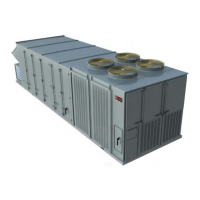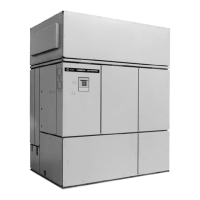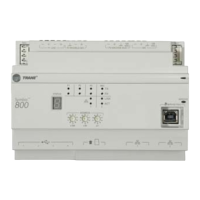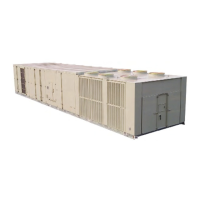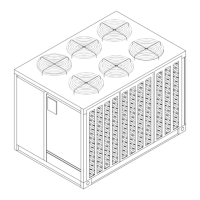SCXF-SVX01Q-EN
101
Diagnostics
Troubleshooting
System Checks
WWAARRNNIINNGG
LLiivvee EElleeccttrriiccaall CCoommppoonneennttss!!
FFaaiilluurree ttoo ffoollllooww aallll eelleeccttrriiccaall ssaaffeettyy pprreeccaauuttiioonnss
wwhheenn eexxppoosseedd ttoo lliivvee eelleeccttrriiccaall ccoommppoonneennttss ccoouulldd
rreessuulltt iinn ddeeaatthh oorr sseerriioouuss iinnjjuurryy..
WWhheenn iitt iiss nneecceessssaarryy ttoo wwoorrkk wwiitthh lliivvee eelleeccttrriiccaall
ccoommppoonneennttss,, hhaavvee aa qquuaalliiffiieedd lliicceennsseedd eelleeccttrriicciiaann
oorr ootthheerr iinnddiivviidduuaall wwhhoo hhaass bbeeeenn pprrooppeerrllyy ttrraaiinneedd
iinn hhaannddlliinngg lliivvee eelleeccttrriiccaall ccoommppoonneennttss ppeerrffoorrmm
tthheessee ttaasskkss..
Before proceeding with technical trouble charts or
controls checkout, complete the following system
analysis:
1. Measure actual supply voltage at the compressor
and an motor terminals with the unit running.
Voltage must be within the range listed on the
motor nameplate. Phase imbalance must be less
than 2.0%.
2. Check all wiring and connections to be sure that
they are intact, secure and properly routed. The as
wired system diagrams are provided in the unit
control panel.
3. Check that all fuses are installed and properly sized.
4. Inspect air filters and coils to be sure that airflow to
the unit is not restricted.
5. Check the zone thermostat settings.
6. Ensure that the fan is rotating in the proper
direction. If phasing is wrong at the main power
terminal block, the fan and compressors will not
run correctly.
7. Inspect ductwork and duct connections for
tightness.
Operating Procedures
Install pressure gauges on the discharge and suction
line access valves. When the unit has stabilized (after
operating approximately 15 minutes at full load),
record suction and discharge pressures. System
malfunctions such as low airflow, line restrictions,
incorrect refrigerant charge, malfunctioning of
expansion valves, damaged compressors, etc. will
result in pressure variations which are outside the
normal range.
NNoottee:: If phasing at the main incoming power terminal
is incorrect, switch two of the three incoming
power leads. If a compressor has been replaced
and the phase is changed at the compressor, it
will run backwards and discharge pressure will
be very low. To resolve incorrect compressor
wire phasing, change phasing at the compressor.
It is important that pressures be measured under stable
and constant conditions in order for the readings to be
useful.
Voltage Imbalance
Voltage imbalance on three-phase systems can cause
motor overheating and premature failure. Maximum
allowable imbalance is 2.0%, and the readings used to
determine it must be measured at the compressor
terminals.
Voltage imbalance is defined as 100 times the sum of
the division of the three voltages from the average
voltage. If, for example, the three measured voltages
are 221, 230, 227, the average is:
221 + 230 + 227
3
= 226 volts
Therefore, the percentage of voltage imbalance is:
100*(226-221)/226 = 2.2%
In this example, 2.2% imbalance of more than 2.0%
exists, be sure to check the voltage at the unit
disconnect and terminal block switch. If an imbalance
at the unit disconnect switch does not exceed 2.0%, the
imbalance is caused by faulty wiring within the unit. Be
sure to conduct a thorough inspection of the unit
electrical wiring connections to locate the fault, and
make any repairs necessary.
Table 49. Potential unit issues and solutions
Problem Possible Cause Remedy
Drain pan is overflowing Plugged drain line Unit not level Clean drain line Level unit
Standing water in drain pan Unit not level Plugged drain line Level Unit Clean drain line
Wet interior insulation Coil face velocity too high Improper trap
design Drain pan leaks/overflowing
Condensation on surfaces
Reduce fan speed Design trap per unit
installation instructions Repair Leaks Insulate
surfaces
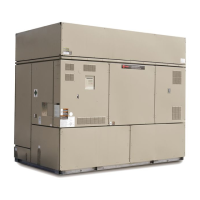
